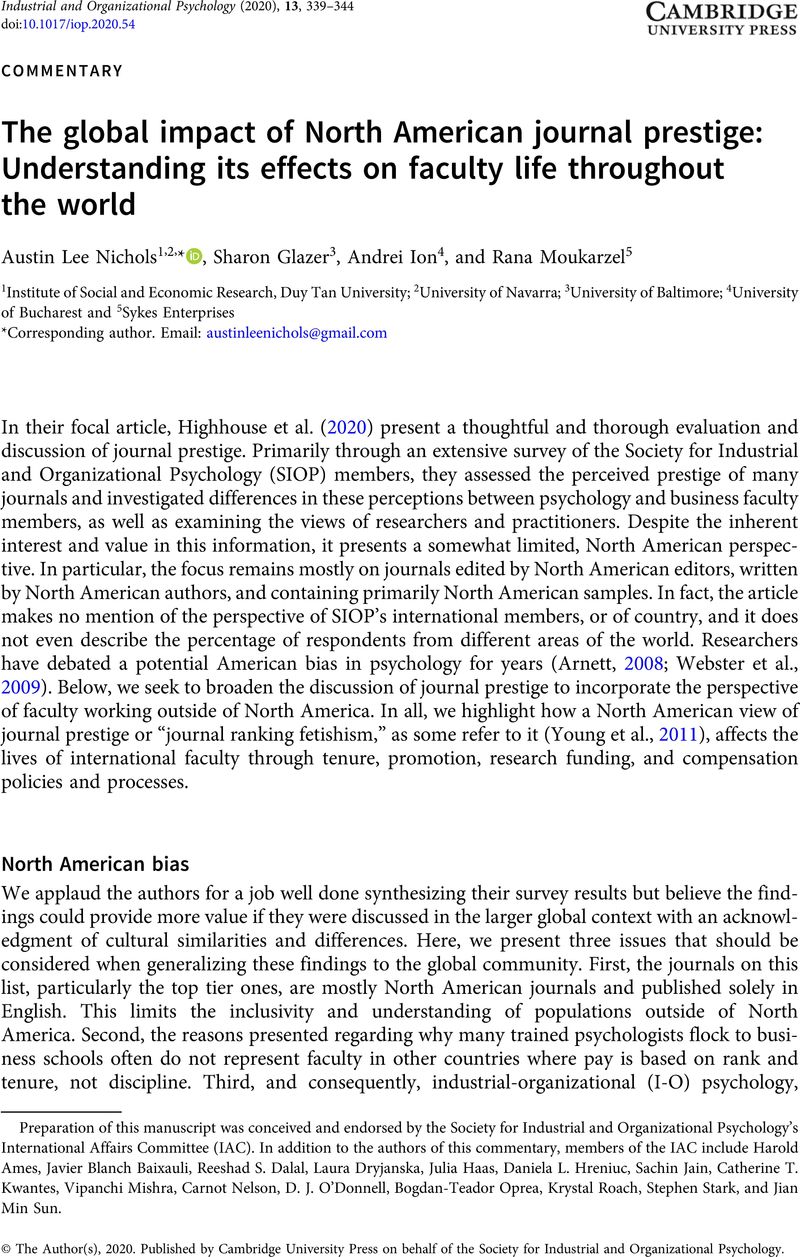Published online by Cambridge University Press: 11 November 2020

Preparation of this manuscript was conceived and endorsed by the Society for Industrial and Organizational Psychology’s International Affairs Committee (IAC). In addition to the authors of this commentary, members of the IAC include Harold Ames, Javier Blanch Baixauli, Reeshad S. Dalal, Laura Dryjanska, Julia Haas, Daniela L. Hreniuc, Sachin Jain, Catherine T. Kwantes, Vipanchi Mishra, Carnot Nelson, D. J. O’Donnell, Bogdan-Teador Oprea, Krystal Roach, Stephen Stark, and Jian Min Sun.